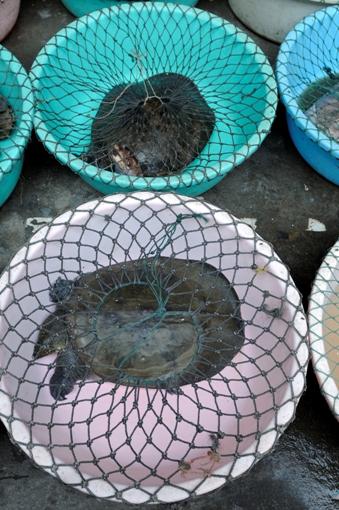Traditions - Typical Dishes

Gastronomic tourism is one of the most demanded attractions in trips abroad. Getting to know the gastronomic culture and the local cuisine can be one of the most rewarding experiences of a vacation, however, when the ingredients of a meal come from endangered or threatened species, or when the preparation of certain dishes involves extreme animal suffering, travelers should rethink whether certain recipes are worth trying.
Hereunder is an analysis of the ingredients and origins of some traditional dishes:
- Shark fin soup is a popular delicacy in many Asian countries, but it’s a bloody dish to make. After the sharks are hauled on-board fishing ships, their fins are hacked off and they’re thrown back alive, left to die a slow, painful death. About 100 million sharks are caught worldwide each year, many to make Shark fin soup.
- Bird's nest soup is prepared from nests formed from the saliva and regurgitated algae of Asian swifts. It is a luxury product and is believed to have very high nutritional content. Nowadays, the demand is growing so the industries exploit the caves where the nests are located, without respecting the policy of leaving a nest so that the birds can deposit and feed their young. This is causing an alarming decline in populations in countries like China or Thailand.
- Turtle eggs are eaten as bar snacks in some parts of Asia and the Caribbean but, because most turtle species reproduce slowly, the practice of taking turtle eggs is endangering their survival.
- Whale meat can be found in some places in Iceland, Japan, Canada, Greenland or Norway. Not only does this threaten the survival of whales, but their meat, especially blubber, often contains high levels of toxic substances such as polychlorinated biphenyls (PCBs) and mercury.
- Civet meat: despite a decline in demand after it was linked to the spread of the SARS virus in China in 2003, there are still farms that raise civet meat in small cages without any care for its welfare.
- • Reptile meat is a typical dish in many countries. In Central America, for instance, iguanas can be found on sale by roadsides and in markets. To stop them from escaping once caught, the tendons in their front legs are often cut and used to tie their legs behind their backs.
- Bushmeat is very popular in many parts of Africa, Asia and Latin America. The trade of money meat, anteater, zebra, etc., has highly increased in recent years and it is currently the most significant threat to the great apes in Africa.
- Kopi luwak or civet coffee is coffee obtained from beans that, after being ingested by the civet, pass through his intestinal tract and are expelled among his feces still covered by the internal layers of the fruit. Raised in captivity or simply hunted in the wild, civets remain caged for the rest of their lives to produce this very expensive coffee that is sold on the islands of Sumatra, Java, Bali, in the Philippines, in East Timor and in Vietnam.
Although the consumption of certain species may represent a threat to conservation or simply resulting more culturally shocking, we at FAADA would like to encourage all travellers to reflect on the consumption of any animal species, including those that are often referred to as "farm animals" in Western countries. All animals have the same capacity to feel and suffer, and, like human beings, they long to live a life free from abuse and to carry out their natural behaviors. The consumption of animals and their derivatives always involves suffering, the premature death of individuals bred for this purpose, as well as environmental and health problems for people. Nowadays, travelling on a vegan diet is relatively simple, and people who want to try it can find practical information in this section of our website.
Sources and further information on the IFAW website.
